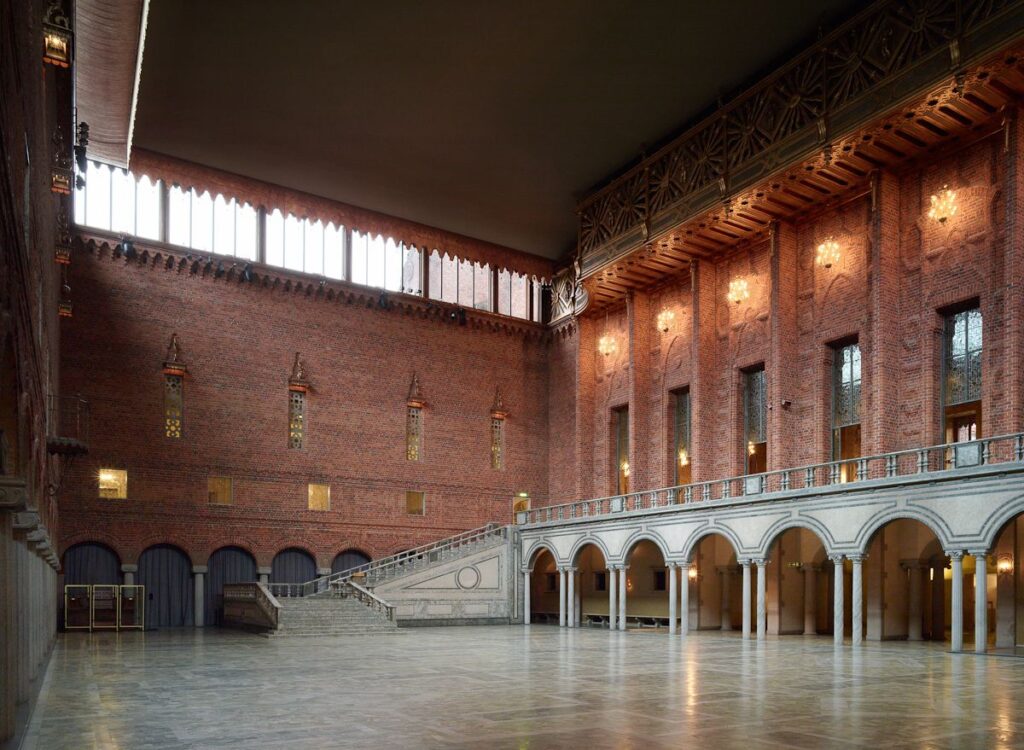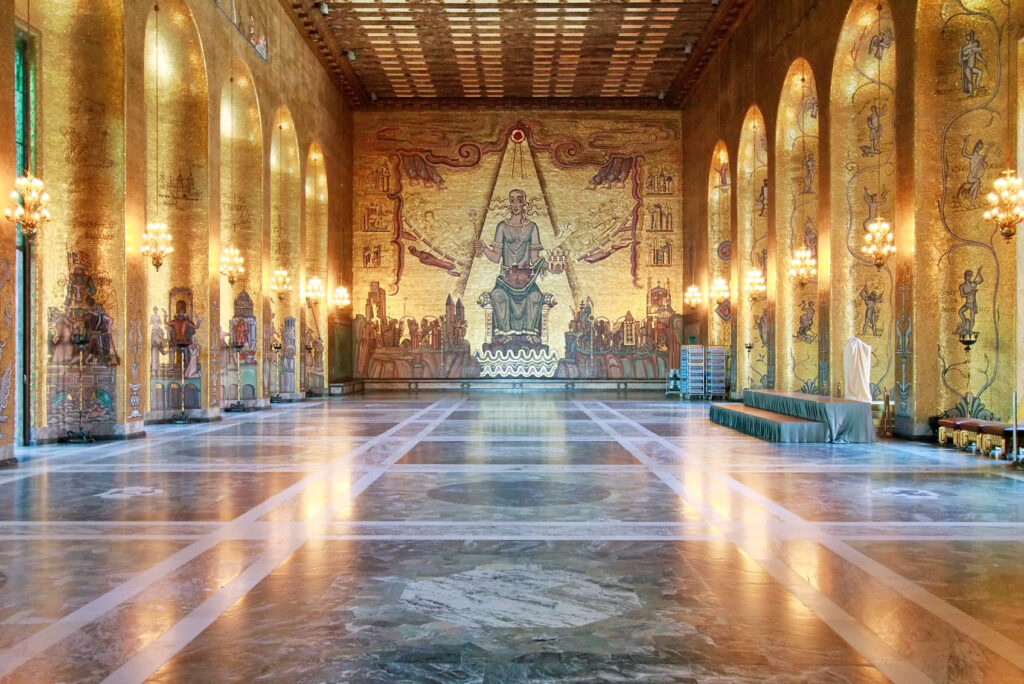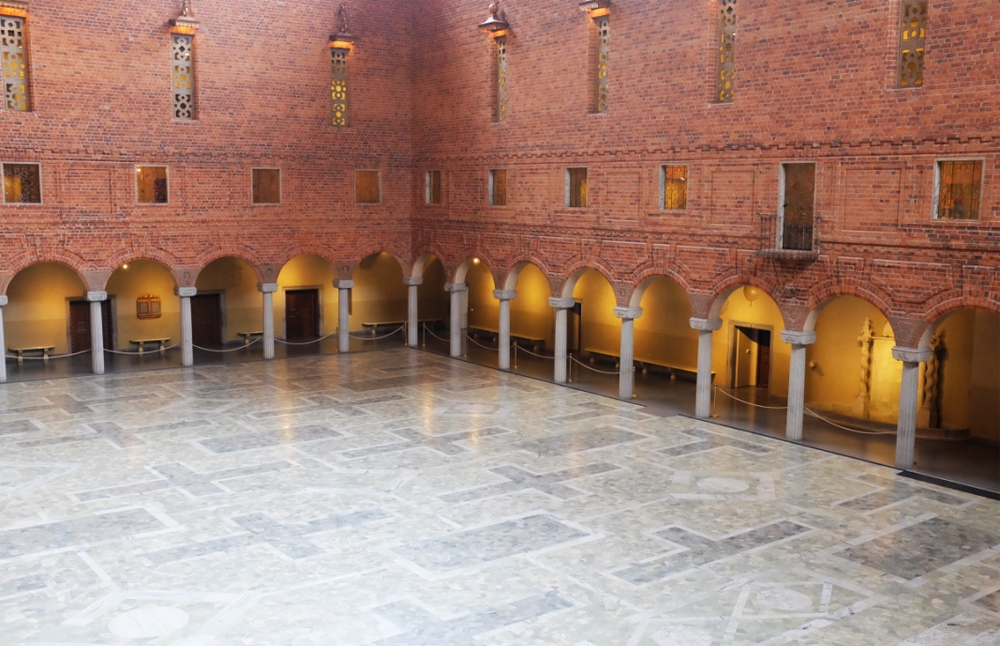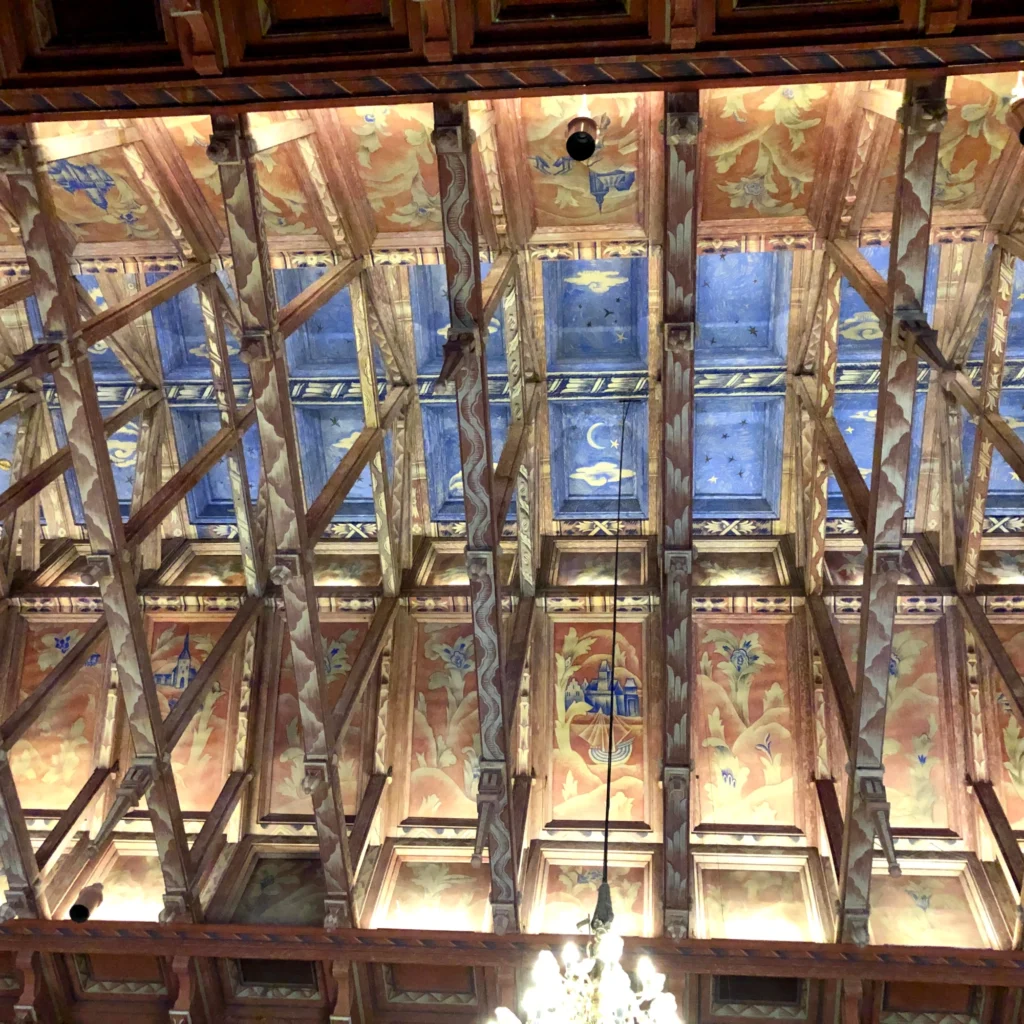
If there is something the people of Stockholm are prouder of than their magnificent City Hall, it is its National Romantic Style in architecture. It was rising from an upswell of national consciousness, spread across the Nordic countries in the early 20th century, and coming to express their unique northern identity. Stockholm City Hall is one of Europe’s most beautiful buildings, or in the words of my mentor, Derek Ostergrad, ‘remarkable beyond words,’ and is one of the most ambitious and magnificent manifestations of this style. The seat of Stockholm Municipality was understandably the first stop in my visit to Sweden’s capital: the courtyard in red bricks with the view to the water; the Blue Hall; the Golden Hall; the Council Chamber, like nocturne in blue and gold that takes your breath away.
Its history began in the early years of the 20th century, when the city council decided to build a new city hall—one that was ambitious, magnificent, to represent the Swedish people and their values. The winner of the architectural design competition was Ragnar Östberg, who, with this building, established himself in the pantheon of the history of modern architecture. He came to represent the search for a modern architecture with connections to the Swedish tradition. A true masterpiece which took twelve years to complete, it was inaugurated in 1923. The narrative of the building is powerful and present, and you can read the building as if you were reading the Bible. Every element, every material, ornament, every depiction tells a story, and together they are interwoven into a monument to Swedish culture.
We can fully come to know the National Romantic style while experiencing the building from within: the Northern European brick construction with whimsical elements reminiscent of Venetian architecture, such as the decorated balconies, wooden masts, and the enormous box holding the organ. The use of bricks, representing values of simplicity and skills of craftsmanship, was inspired by William Morris and the British Arts and Crafts Movement. The Blue Hall, with its straight walls and arcades, incorporates elements of a formal courtyard, similar to Italian palazzos, but there is nothing blue about it. Östberg intended to paint every one of the bricks blue, but changed his mind after construction began, and so the hall, which houses all banquets held following the annual Nobel Prize award ceremony, remained red. The Golden Hall looks like a spectacular Byzantine dream. All of its walls are covered with mosaics in gold, which tell stories from Swedish history and are filled with coats of arms and symbols. Finally, the Council Chamber, which is so formal and magnificent that everywhere you look, you discover a piece of the narrative.
The Stockholm City Hall represents a turning point in the history of Nordic architecture, when a new, young generation of architects began to search for a modern style that would depart from 19th-century internationalism and sought a style that represented their own national identity, similar to Art Nouveau in France and Central Europe, Jugednstil in Germany, and Liberty in Italy. They were looking for handcraftsmanship as the magic element that would help them to depart from the era of the Industrial Revolution. The Stockholm City Hall is poetry to Swedish patriotism that was in full bloom during the early 20th century—an icon of modern architecture.






